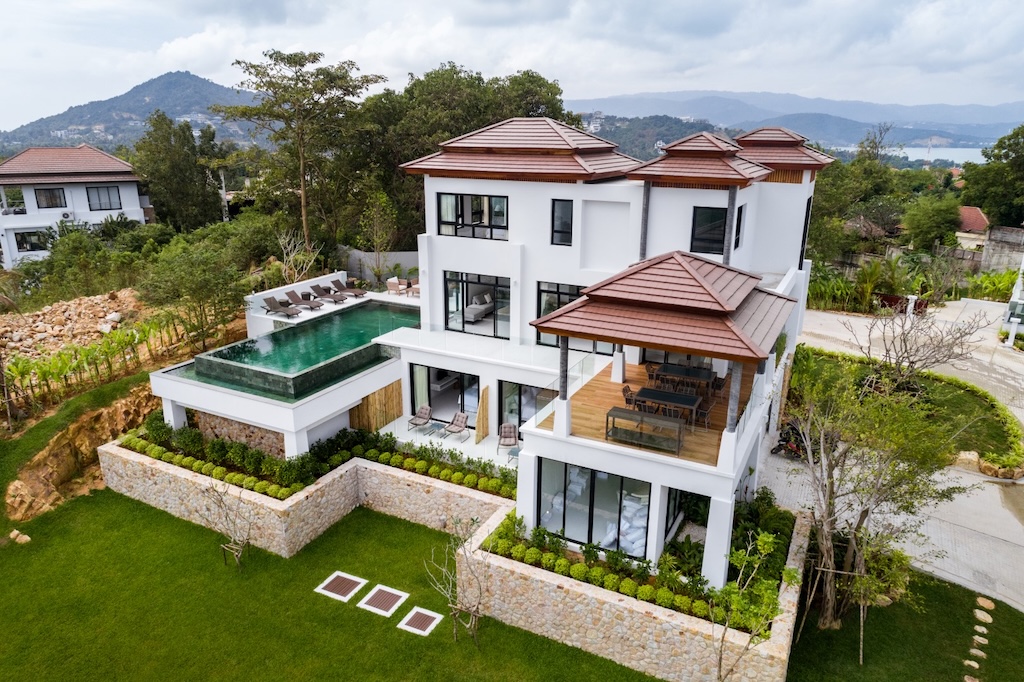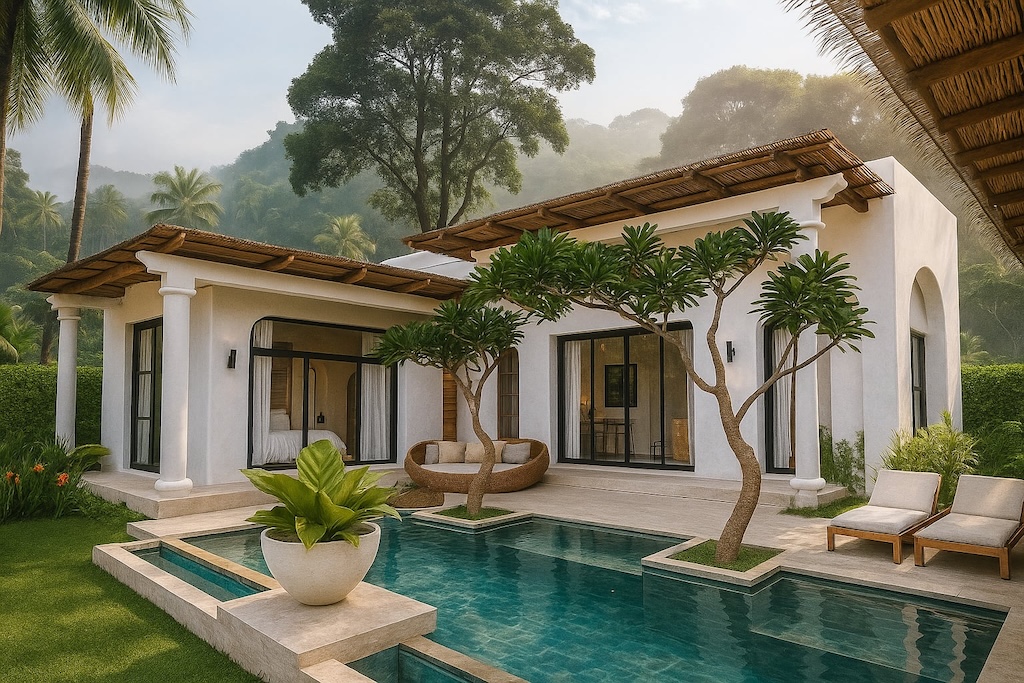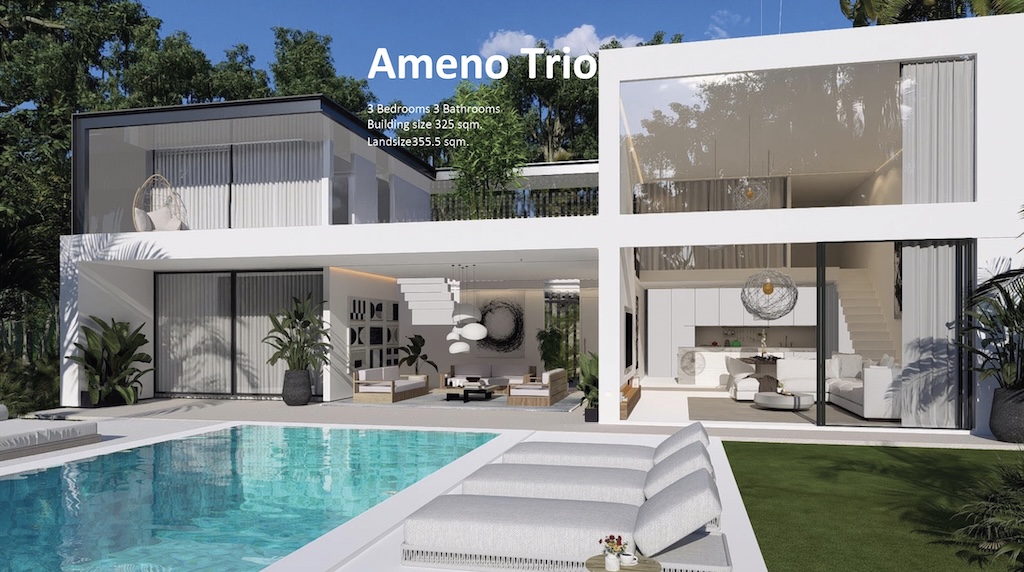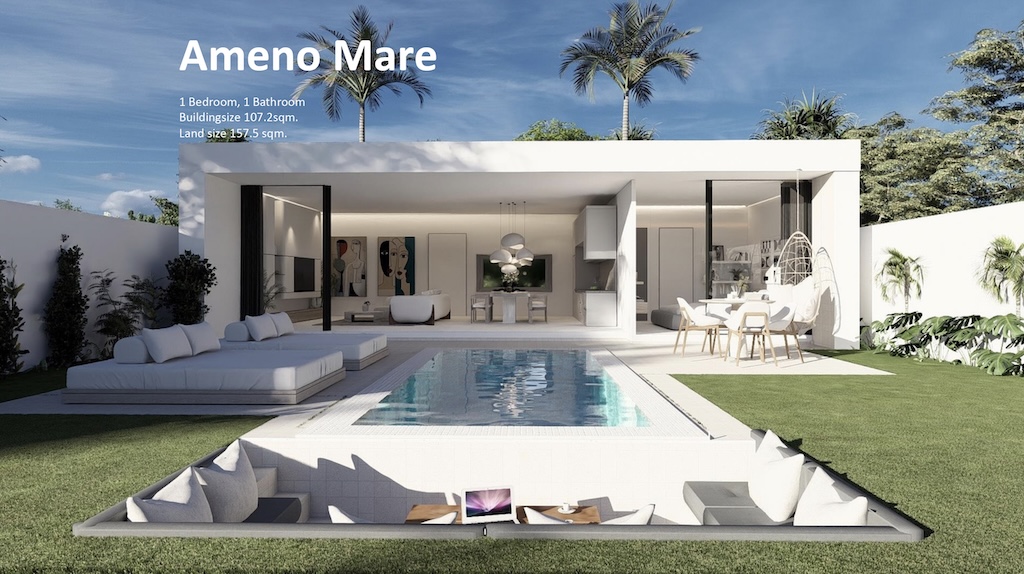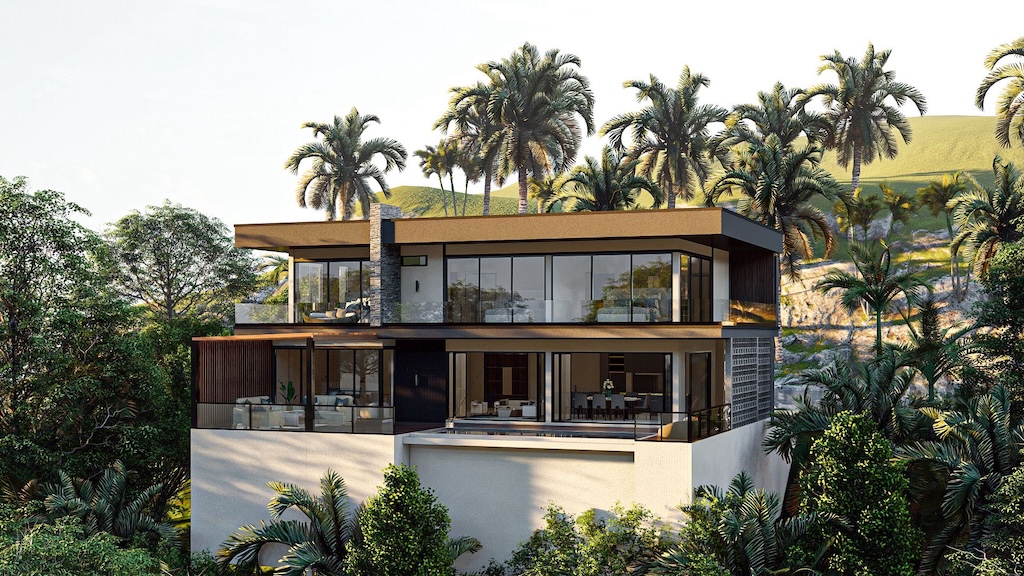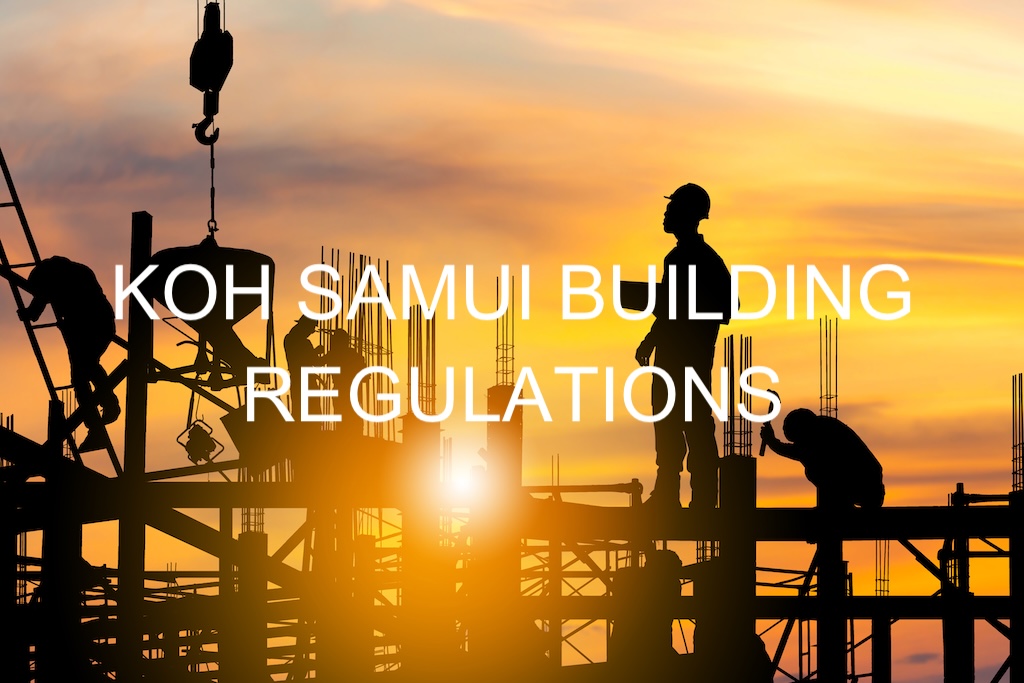
Navigating the building and environmental regulations in Koh Samui, a comprehensive guide – Koh Samui, a tropical paradise nestled in the Gulf of Thailand, beckons with its pristine beaches, lush landscapes, and vibrant culture. For those dreaming of owning property or developing land on this idyllic island, understanding the intricate web of building and environmental regulations is crucial. These guidelines not only shape the island’s development but also preserve its natural beauty and cultural heritage. Here we’ll explore the key aspects of Koh Samui’s regulatory framework, providing valuable insights for property owners, developers, and investors alike.
Understanding Koh Samui’s Zoning System
Koh Samui’s zoning system forms the backbone of its development strategy, carefully delineating areas for various types of building and land use. This system plays a pivotal role in maintaining the island’s charm while accommodating growth and development. Let’s delve into the four primary zones that are most relevant for residential and commercial properties:
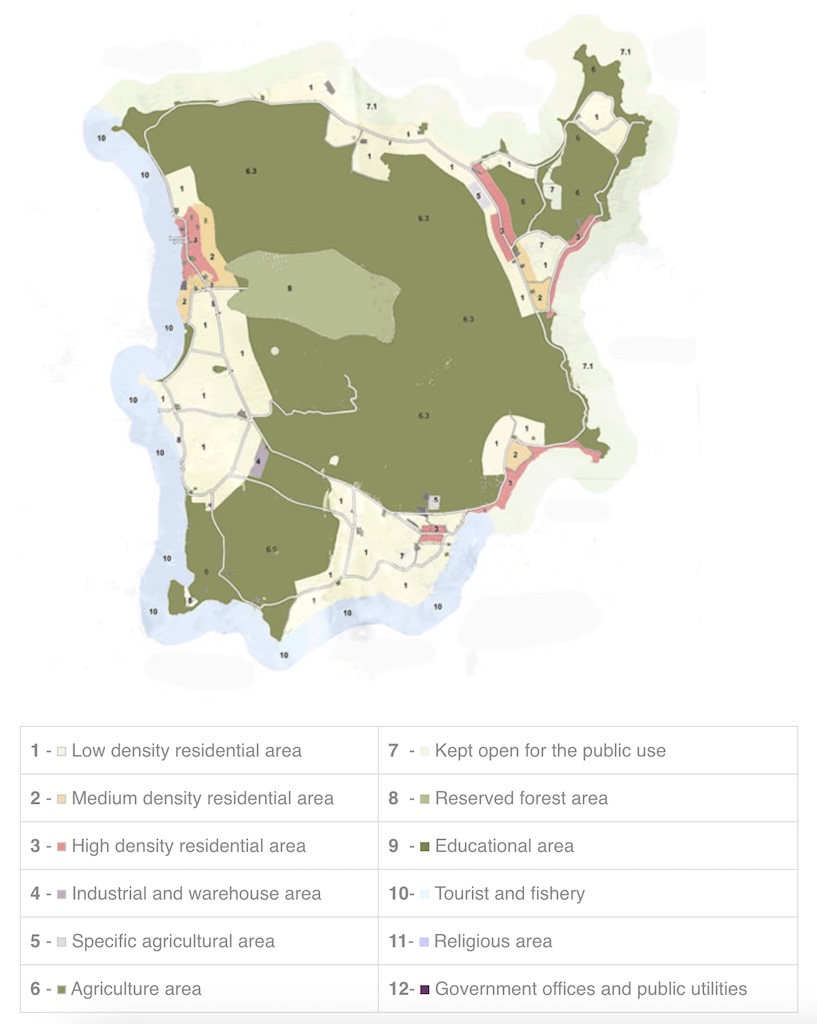
The Green Zone: A Haven for Villa Development – The Green Zone, encompassing areas 6.1 to 6.9, is primarily designated for low-density residential building development. This zone is particularly popular among foreign investors and those looking to construct villas. Key features of the Green Zone include:
- Ideal for building dream homes and luxury villas
- Offers a balance between development and natural surroundings
- Covers a significant portion of Koh Samui’s residential areas
- Provides favorable conditions for creating personalized living spaces
The Yellow Zone: Versatility in Development – Zones 1 to 1.20, known as the Yellow Zone, offer flexibility for both residential and condominium development. This zone is particularly attractive for:
- Developers planning condominium projects under the foreign condominium act
- Those seeking areas suitable for low-density residential development
- Investors looking for versatile property options
The Orange Zone: Medium-Density Residential Areas – The Orange Zone, comprising zones 2 to 2.4, is designated for medium-density residential and tourism-related developments. Key points to note:
- Allows for a mix of residential and tourism-focused constructions
- Limits non-residential land use to 20% of the total area
- Requires adherence to specific rules and regulations for development
The Red Zone: High-Density and Commercial Hub – Zones 3.1 to 3.11 fall under the Red Zone category, catering to high-density residential and commercial purposes. This zone is characterized by:
- Focus on commerce, residential living, and tourism
- Restriction of non-commercial/residential use to 15% of the total land area
- Strict compliance requirements for successful development
Koh Samui Environmental Considerations in Construction
The building regulations in Koh Samui extend beyond zoning to encompass crucial environmental factors. These regulations aim to protect the island’s natural beauty and ecological balance. Let’s explore the key environmental considerations that shape construction on the island:
Proximity to the Beach: Preserving Coastal Beauty
Building near Koh Samui’s stunning beaches comes with specific restrictions designed to maintain the island’s coastal allure:
- Within 10 meters of the beach: No construction allowed, preserving the natural beachfront
- 10 to 50 meters from the beach: Single-story structures limited to 6 meters in height, with a maximum floor area of 75 square meters
- 50 to 200 meters from the beach: Buildings up to 2,000 square meters allowed, with a maximum height of 12 meters
- Beyond 200 meters: Similar height restrictions apply, with more flexibility in total floor area
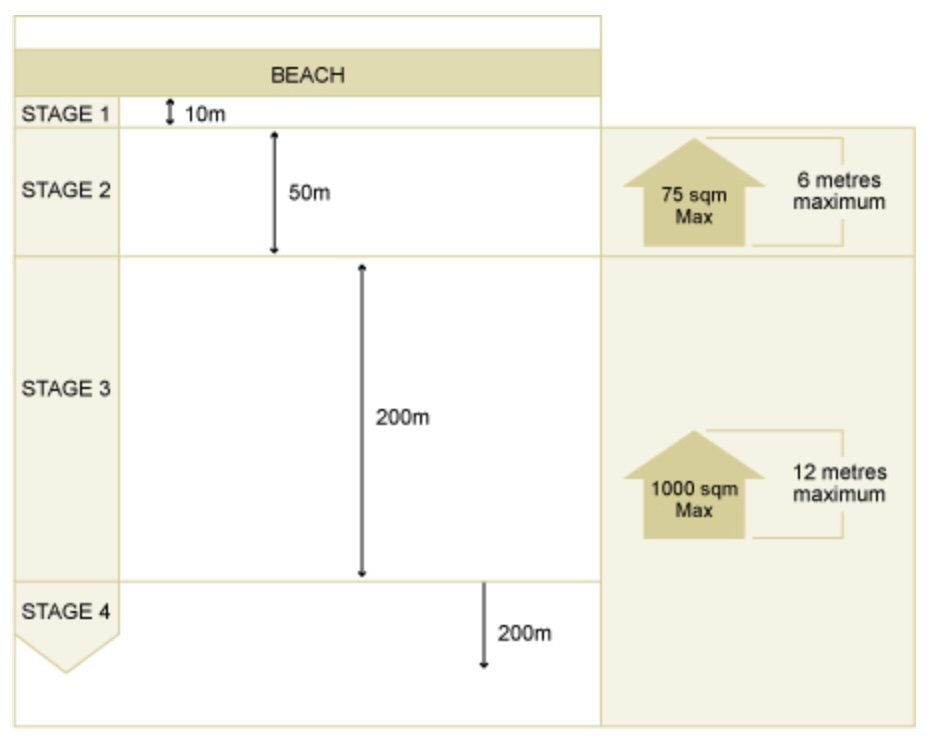
Altitude Considerations: Building Regulations on Higher Ground
Koh Samui’s varied topography necessitates different building approaches based on altitude:
- Below 80 meters above sea level: Standard regulations apply for single-home construction
- 80 to 140 meters above sea level: Restrictions include a maximum height of 6 meters, minimum land area of 400 square meters, and 50% green space requirement
- Above 140 meters: Stricter limitations with a maximum floor area of 90 square meters and 6-meter height limit
Koh Samui Slope Building Regulations Regulations
Ensuring Stability and Safety – The island’s hilly terrain introduces additional considerations for construction on sloping land:
- Slopes less than 35 degrees: No additional restrictions beyond standard regulations
- Slopes between 35 and 50 degrees: Limited to single-family homes with specific size and height restrictions, plus requirements for unbuilt and planted areas. Maximum 2 floors, 6 meter max height with the footprint of each pavilion not exceeding 80 Sqm, 25% of the land can be constructed.
- Slopes exceeding 50 degrees: Construction prohibited no building permits will be issued.
Koh Samui Architectural Design and Sustainability Requirements
Koh Samui’s building regulations extend beyond structural aspects to encompass aesthetic and environmental considerations. These guidelines aim to preserve the island’s cultural identity and ensure sustainable development:
Embracing Traditional and Tropical Aesthetics – The island’s regulations encourage architectural designs that reflect:
- Traditional Thai elements
- Tropical style features
- Local aesthetic sensibilities
This approach helps maintain Koh Samui’s unique charm and cultural heritage.
Roof Design Specifications – A notable requirement in the architectural guidelines is the emphasis on roof design:
- Roofs must cover at least 80% of the building
- This specification aligns with traditional Thai architectural styles
- It contributes to the overall visual harmony of the island’s built environment
Sustainability Measures – Koh Samui’s building regulations place a strong emphasis on environmental sustainability:
- Encouragement of eco-friendly building practices
- Focus on preserving natural resources
- Promotion of long-term sustainable development strategies
These measures ensure that new constructions contribute positively to the island’s ecological balance.
Navigating the Koh Samui Building Approval Process
Understanding the approval process is crucial for anyone planning to build on Koh Samui. This process involves several steps and considerations:
Initial Assessment and Planning – Before submitting any formal applications, it’s advisable to:
- Conduct a thorough site analysis
- Consult with local experts familiar with the Koh Samui building regulations
- Develop preliminary plans that align with zoning and environmental requirements
Document Preparation – The approval process requires comprehensive documentation, including:
- Detailed architectural plans
- Environmental impact assessments
- Land ownership documents
- Proof of compliance with all relevant regulations
Submission and Review – Once documents are prepared:
- Submit applications to the relevant local authorities
- Be prepared for a review process that may involve multiple departments
- Expect potential requests for additional information or modifications
Addressing Feedback and Modifications – It’s common for initial submissions to require adjustments:
- Be open to feedback from regulatory bodies
- Work closely with architects and legal advisors to address any concerns
- Make necessary modifications to ensure full compliance
Final Approval and Permits – Upon successful review:
- Receive final approval from local authorities
- Obtain necessary building permits
- Ensure all conditions and stipulations are clearly understood before commencing construction
Impact of The Building Regulations on Koh Samui Property Value & Development
Understanding how the Koh Samui building regulations affect property values and development potential is crucial for investors:
Zoning and Property Values – Different zones can significantly impact property values:
- Prime areas like beachfront zones often command higher prices
- Restrictions in certain zones may limit development potential, affecting value
- Understanding these nuances is key to making informed investment decisions
Environmental Regulations and Development Costs – Compliance with environmental regulations can influence development costs:
- Stricter rules in environmentally sensitive areas may increase construction expenses
- However, these regulations also help maintain the island’s appeal, potentially boosting long-term value
Balancing Development and Preservation – Koh Samui’s regulations aim to strike a balance between growth and conservation:
- This approach can lead to more sustainable, high-quality developments
- Properties that align well with these goals may see increased demand and value over time
Future Trends in Koh Samui Building Regulations
As Koh Samui continues to develop, its building regulations are likely to evolve. Understanding potential future trends can help in long-term planning:
Increased Focus on Sustainability – Expect a growing emphasis on eco-friendly building practices:
- Potential incentives for green building technologies
- Stricter energy efficiency requirements
- Greater focus on waste management and water conservation in new developments
Adaptation to Climate Change – As global climate concerns grow, regulations may adapt to address:
- Coastal erosion and sea-level rise
- Extreme weather resilience in building designs
- Enhanced flood prevention measures in low-lying areas
Smart City Initiatives – Koh Samui may incorporate smart city concepts into its regulations:
- Integration of digital technologies in urban planning
- Regulations supporting improved connectivity and infrastructure
- Emphasis on creating more livable and efficient urban spaces
Conclusion
Navigating Koh Samui’s building and environmental regulations requires a comprehensive understanding of various factors, from zoning laws to environmental considerations. While these regulations may seem complex, they play a crucial role in preserving the island’s natural beauty and ensuring sustainable development. For property owners, developers, and investors, staying informed about these regulations is key to successful projects on this tropical paradise.
By adhering to these guidelines, stakeholders contribute to the island’s sustainable growth while creating properties that harmonize with Koh Samui’s unique environment and culture. As the island continues to evolve, so too will its regulatory framework, always striving to balance development with preservation of its natural and cultural heritage.

